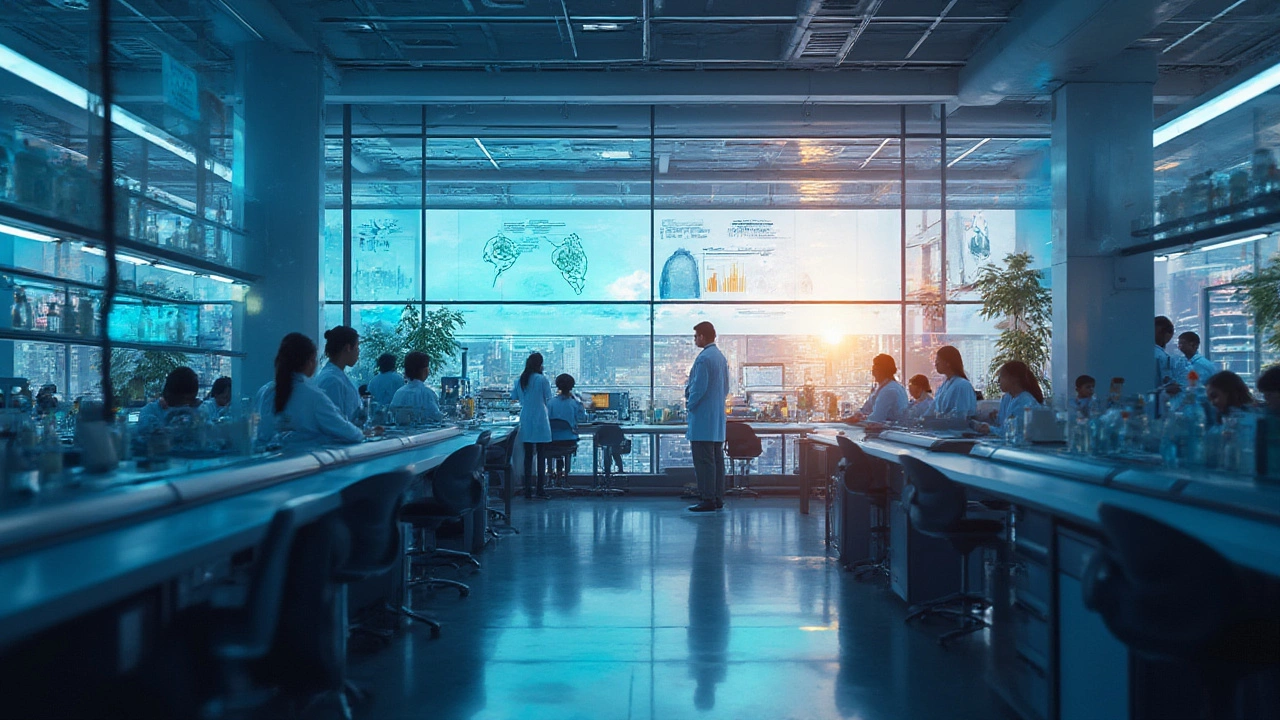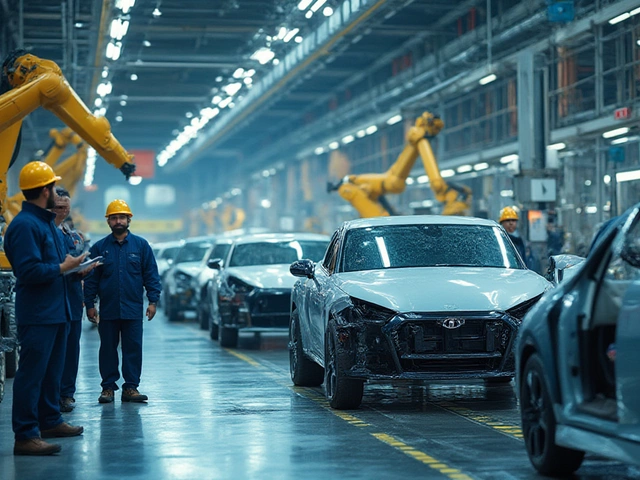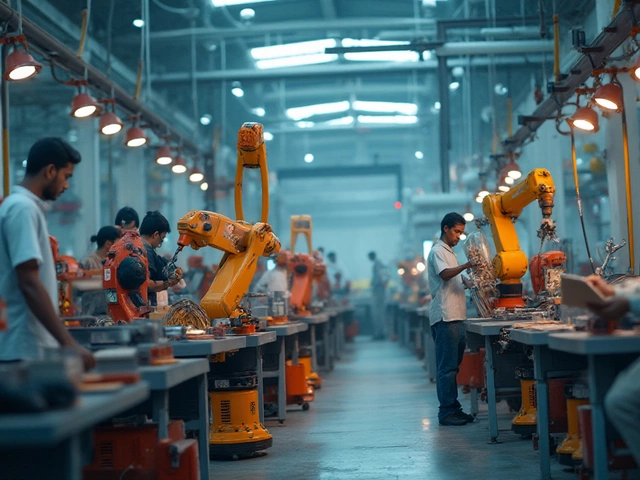Imagine two giant corporations tied together by history, split by strategy, and always compared. That’s Abbott and AbbVie. These aren’t just any companies; both are powerhouses in the healthcare sector, each shaping how we think about medicine, innovation, and growth. But when it comes to sheer size and influence in 2025, which one actually comes out on top? This is more than just a numbers game—it’s a look into the business of health, where size says a lot about success, strategy, and future plans.
Abbott and AbbVie: Where They Stand Today
First things first—Abbott and AbbVie used to be a single firm. Abbott Laboratories, with roots dating back over 135 years, decided in 2013 to spin off its branded pharmaceuticals division into a new company: AbbVie. The split was supposed to give each business the focus it needed to compete, but ever since, people can’t help but ask: who’s bigger now?
The comparison starts with revenue, and let’s get right to the latest available numbers. Abbott Laboratories reported revenues of around $44.6 billion in 2024, according to their annual report. Their strong suit? Diagnostics, medical devices—like glucose monitoring tech for diabetes—and nutritional products. Abbott makes those iconic Ensure shakes, Similac baby formula, and even created the FreeStyle Libre continuous glucose monitor that’s been a game-changer for diabetics worldwide.
On the other side, AbbVie raked in about $54.3 billion in revenue for 2024, outpacing its former parent. AbbVie bet big on pharmaceuticals—especially immunology drugs like Humira, Skyrizi, and Rinvoq. Humira alone was for years the world’s top-selling prescription drug, pulling in about $12.2 billion in 2024, despite facing biosimilar competition now that its U.S. patent has expired.
This isn't just about the numbers, though. Both companies keep investing in innovation. Abbott's pipeline includes next-gen heart pumps, diagnostic tools, and nutritional advances. AbbVie, meanwhile, pushes hard into neuroscience and oncology after its $63 billion acquisition of Allergan in 2020, adding Botox and other therapies to its arsenal.
If you peek at total assets and global workforce, the picture shifts. Abbott employs about 114,000 people globally, and holds assets worth $77.8 billion as of 2024. AbbVie keeps around 50,000 employees and reported assets of $140.9 billion—a whopping figure, but heavily influenced by goodwill from acquisitions. If headcount's your metric, Abbott’s bigger. If it’s about annual sales, AbbVie’s ahead. Funny how the answer changes depending on where you shine the spotlight, isn’t it?
To pull all this together, here’s a handy comparison table so you can see for yourself:
| Company | 2024 Revenue (USD) | Employees | Total Assets (USD) |
|---|---|---|---|
| Abbott | $44.6 billion | 114,000 | $77.8 billion |
| AbbVie | $54.3 billion | 50,000 | $140.9 billion |
So, which is bigger? Looking at raw annual revenue—AbbVie wins. But by headcount and product diversity, Abbott’s got the edge.

How Both Giants Became Power Players in Their Fields
Both companies have taken very different paths since the split. Abbott is what you might call a diversified health tech leader. It makes products you probably have in your home, but also tech doctors rely on in hospitals. If you’ve had a rapid COVID-19 test, chances are Abbott made it; their BinaxNOW tests have been shipped by the hundreds of millions. The FreeStyle Libre sensor, meanwhile, has pretty much disrupted how diabetics manage blood sugar, offering more freedom and less pain versus old-school finger sticks.
Then there’s nutrition. Abbott’s not shy about pushing innovation in this space, keeping ahead by rolling out new products that cater to aging populations or people with special dietary needs. Their ability to operate in over 160 countries gives them stability—when one market shakes, another strengthens—and that’s no small feat in healthcare, where throwing resources behind R&D can be a gamble.
AbbVie, meanwhile, doubled down on medicines. When it spun from Abbott, most thought it couldn’t last long because Humira accounted for nearly all its sales. But the team got creative—and aggressive. It spent big on R&D, snapping up promising drugs for autoimmune diseases, cancer, and even rare neurological disorders. That $63 billion Allergan deal in 2020 shot AbbVie up the pharma food chain, giving it Botox and other big earners, bridging the gap left as Humira’s patents expired in the U.S. and Europe.
Here’s an eye-opener: AbbVie poured $7.2 billion into research and development in 2024. The bet? That new drugs like Skyrizi, Rinvoq, and Vraylar will become the new blockbusters. And so far, it’s paying off—these drugs are growing fast, and Vraylar’s U.S. approval for bipolar depression broadened its market in 2024.
Abbott and AbbVie also invest in their people. Abbott lands regularly on Fortune’s “Most Admired Companies” list, in part for fostering innovation. AbbVie, recognized for diversity and inclusion, puts muscle into employee development too. Their approaches are different, but both believe treating people well leads to better business—something plenty of firms could learn from.
The rivalry—if we can call it that—goes beyond bragging rights. It shapes how both companies make decisions, what markets they enter, and how they weather tough times. Take COVID-19: Abbott pivoted fast to supply critical testing, while AbbVie donated antiviral therapies and ramped up research. Both delivered, but in totally different ways, reflecting their unique focuses and strengths.
Both names are now deeply entrenched in healthcare’s story—Abbott as a health technology stalwart, AbbVie as a pharmaceutical innovator. Their combined roots mean each still feels a bit like family to the other, despite charting different courses. In boardrooms, labs, or even on store shelves, you feel the ripple effects of their split to this day.

The Real-World Impact and What the Future Holds
Now, you might be wondering—does being “bigger” even matter? In healthcare, it actually does. More revenue often means more muscle for research, which can mean getting life-changing products to market sooner. From wearable tech that quietly monitors heart health to new therapies that help patients live longer, both Abbott and AbbVie influence millions of lives, every day.
But scale comes with headaches too. Both face constant pressure from regulators, competition, and the never-ending need to innovate. AbbVie’s challenge? Replace Humira’s lost revenue as it faces generic competition. There’s also the watchful eye on Allergan’s legacy products—Botox continues to hold its own, but the aesthetics market can be fickle. Keeping growth strong will depend not just on one magic bullet, but a steady pipeline of new drugs and smart acquisitions. AbbVie seems to know this, doubling down on both neuroscience and cancer treatments that could become tomorrow’s blockbusters.
For Abbott, challenges look a bit different. Its diabetes tech business is hot, but competitors like Dexcom are catching up. Supply chain hiccups and global economic slowdowns don’t help. Plus, in 2022, Abbott faced scrutiny and recalls in its infant formula business—reminding everyone that even giants can stumble. Yet, Abbott’s edge is its balance: when devices falter, nutrition or diagnostics help steady the ship. That kind of diversity is gold in this industry.
As for the future, here are some useful tips if you’re tracking, investing in, or just curious about these giants:
- Check a company’s pipeline, not just its current big sellers. AbbVie’s future depends on drugs that aren’t household names—yet.
- Watch for regulatory news. Would-be blockbusters can rise or fall overnight depending on FDA decisions. Both Abbott and AbbVie have big bets riding on new approvals in 2025 and beyond.
- Remember, bigger isn’t always safer. Diversification (Abbott’s strong suit) can provide more stability than a single mega-product (AbbVie’s initial setup).
- If you care about long-term growth, get curious about how each company handles R&D spending versus profits. Innovation takes guts—and cash.
- Never forget the people factor. Companies that invest in their workforce often pull ahead over time, even against bigger, flashier rivals.
One last fact to chew on: Abbott and AbbVie are still neighbors in many ways—offices, culture, basic mission. Yet, their competition is worldwide, up against not just each other but firms like Johnson & Johnson, Moderna, and Roche. The stakes couldn’t be higher, and every quarterly report, every clinical trial result, every product recall matters. It’s a high-wire act, and it won’t slow down anytime soon.
So when someone argues about which company is bigger, now you’ve got the stats, the story, and the context. It’s not just about who’s got the higher revenue—it’s about how each plays the game, what they risk to stay ahead, and what their next move could mean for you and me.





